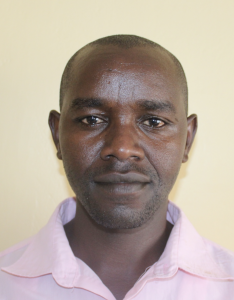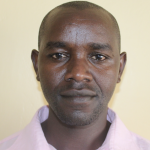Kosiage Primary School was started in 1994 by community members who formed a team to spearhead starting a school in their village. Over the years, this school has gone through a lot of challenges - ranging from issues such as land ownership to keeping up with ever-growing student enrollment.
This school is located upland with a view of the surrounding area. There is a total of eight classrooms, of which four are made of mud. This school is very disadvantaged with no room for students to enjoy recess. The pupils just use the space between the old and new classrooms as their only play area. Plans have been put in place by the management to increase the size of their land, but it's a slow process. The available kitchen is in very bad condition for it too is made of mud. The muddy walls sometimes become loose and fall into the food while it's cooking.
There is no water on school grounds, so the 220 students and 11 teachers and staff here need to get their water elsewhere.
They most often go to a spring in the surrounding community. It's not far, but the journey is still a challenge. The terrain is very rocky and steep and students have to pay attention to every step they take to avoid falling. When returning with water, they have to rest because of the strain.
Leaving school to get water is wasting such valuable study time and is draining students of their energy. Teachers notice how the strenuous chore of fetching water is impacting students' performance in class:
"Without sufficient clean drinking water, the lives of many pupils are at risk," said Headteacher Mise.
"Cases of pupils yawning in class and some feeling weak and pale makes concentration in class very poor, thus resulting in poor academic performance."
What we can do:
Lack of vital facilities such as a water tank for safe drinking water, handwashing stations for hygiene purposes, and decent latrines for sanitation has led to a reduced student population as parents pull their children out.
"I came to this school not knowing that there are a lot of things that need to be realigned in order to ensure the smooth running of the school. My main objectives are to see that this school, though in this state, will rise to be one of the most improved schools in the region both structurally and academically," said Headteacher Mise.
"I believe that with the help of friends like [you], we shall surely be able to realize our goals as a school."
Training
Training on good hygiene habits will be held for two days. The facilitator will use PHAST (participatory hygiene and sanitation transformation), ABCD (asset-based community development), CTC (child to child), lectures, group discussions, and handouts to teach health topics and ways to promote good practices within the school. The CTC method will prepare students to lead other students into healthy habits, as well as kickstart a CTC club for the school.
Handwashing Stations
This CTC club will oversee the new facilities, such as handwashing stations, and make sure they are kept clean and in working condition. The two handwashing stations will be delivered to the school, and the club will fill them with water on a daily basis and make sure there is always a cleaning agent such as soap or ash.
VIP Latrines
There are currently only five usable latrines available for all of these students.
Two triple-door latrines will be constructed with local materials that the school will help gather. Three doors will serve the girls while the other three serve the boys. And with a new source of water on school grounds, students and staff should have enough to keep these new latrines clean.
Rainwater Catchment Tank
A 50,000-liter rainwater catchment tank will help alleviate the water crisis at this school. The school will also help gather the needed materials such as sand, rocks, and water from the spring for mixing cement. Once finished, this tank can begin catching rainfall that will be used by the school’s students and staff.
We and the school strongly believe that with this assistance, standards will significantly improve. These higher standards will translate to better academic performance!

 Rainwater Catchment
Rainwater Catchment
 Rehabilitation Project
Rehabilitation Project


































